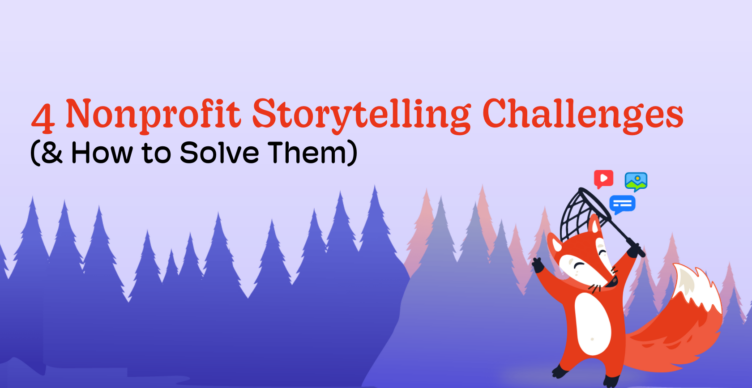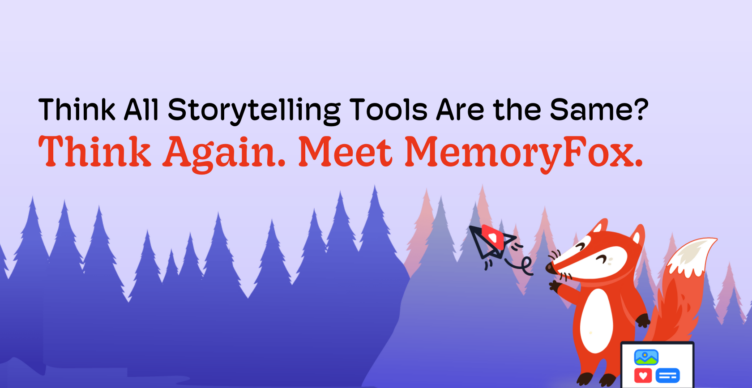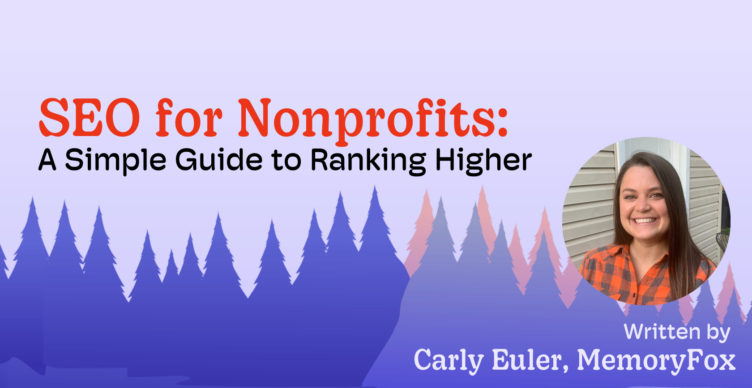Ethical Storytelling, Storytelling Strategy
8 Ethical Storytelling Guide Must-Haves for Your Nonprofit
According to the 2023 Ethical Storytelling Report, 58% of nonprofit professionals say they struggle with collecting stories from their community while doing no harm.
One common route of the “struggle” that nonprofit professionals experience is getting their entire community of forward-facing individuals on the same page when it comes to upholding the dignity and respect of the communities your nonprofit serves. The best way to ensure that your staff members, board members and volunteers are using the correct messaging to represent your organization is to build an Ethical Storytelling Guide.
The purpose of an organization-wide Ethical Storytelling Guide is not to set “rules”, but to put a framework in place that fosters transparency, honesty, and empathy in every narrative you share. In this post, I’ll explore the eight essential elements you must include in your guide to align your community with the strength-based messaging that best represents the important work your nonprofit does.
8 Ethical Storytelling Guide Must-Haves
- Deficit-based phrases to avoid. Include a list of the deficit-based words and phrases that you are committed to avoid in the future. This is especially important in cases where you have historically talked about your community in one way, and are looking to implement a language shift. You will find the most success by including an exhaustive list, making it known to your community that these particular words and phrases are no longer acceptable.
- Strength-based alternatives and replacement phrases. It’s essential to equip your community with strength-based alternatives, so they feel empowered to represent your nonprofit’s mission without hesitation. Consider creating a “use this” / “not that” terms list to make it absolutely clear the alternatives that are best to replace the outdated deficit-based terms. Here is an example guide created by Frank Velásquez Jr., founder of 4 Da Hood.
- Mission-focused terms. Take the time to dig in deeper! Create a section that includes full sentence examples that incorporates your new strength-based language suggestions with your nonprofit’s name and mission. Mission-focused terms serve as wonderful talking points that your community can quickly adopt and implement into social media posts, email correspondence and at in-person networking events.
FOX TIP: Don’t forget to check your website! Once you have mission-focused terms on hand, take a moment to scour your website to see which pages need to be updated. Your website serves as the 24/7 virtual voice for your nonprofit, so it’s essential to make sure you are sending the right message!
- Communications guidelines, sorted by channel. Be sure to make note of any communications guidelines that might differ based on the channel of communication: website, social media, email, grant and beyond. There may be a situation when using deficit-based language exceptions must be made. For example, you might need to use deficit-based language in a grant application if the application uses deficit-based language within their question. Consider how your organization might approach this type of situation and provide relevant guidelines.
- Examples of inspirational nonprofits. If you admire the way other nonprofits frame their messaging, and aspire to imitate them, include examples! Providing direct links to other organizations is a great way to give a boots-on-the-ground reference point to your community.
FOX TIP: One organization I recommend exploring for inspiration is Horizons National. Horizons National works with affiliate across the nation to build long-term partnerships with students, families, communities, and schools to create experiences outside of school that inspire the joy of learning. They are exceptional at using strength-based messaging in all aspects of their work.
- Exercises to practice the new language. As the saying goes, practice makes perfect! And while your staff members, board members, and volunteers may never feel they have the “perfect” answer to every situation, giving them the opportunity to practice is the best way to make them feel comfortable as often as possible. Include practical exercises that allow your community to use the updated language out loud as well as in writing. These exercises promise to instill repetition and build confidence.
- Commitment to reevaluation. In today’s landscape, change happens quickly. That is why an important aspect of your Ethical Storytelling Guide is a commitment to reevaluation. Whether you commit to reevaluating your messaging every 6 months or every 2 years, the key here is to stick to your commitment. (By the way, it is 100% ok if you reevaluate and make no changes!)
- Team signatures. The most challenging part of adopting ethical storytelling practices is getting buy-in from your entire team. That is why I recommend providing a space where staff members, board members and volunteers sign your guide. When people place a signature on a document, they are essentially saying “I have read this and I will do my best to follow these guidelines”.
FOX TIP: Don’t forget about your new hires, board members and volunteers! Make sure your Ethical Storytelling Guide is a part of your standard onboarding procedure to ensure that everyone understands the importance of representing your organization while doing no harm to the community you serve.
 Ethical storytelling is more than a best practice; it’s a commitment to honoring the stories of those you serve with dignity and respect. By incorporating these eight essential elements into your Ethical Storytelling Guide, you can ensure that your entire nonprofit community is equipped to share impactful stories responsibly. As you implement ethical storytelling practices, remember that this is an ongoing journey—one that requires continual reflection, learning, and adaptation.
Ethical storytelling is more than a best practice; it’s a commitment to honoring the stories of those you serve with dignity and respect. By incorporating these eight essential elements into your Ethical Storytelling Guide, you can ensure that your entire nonprofit community is equipped to share impactful stories responsibly. As you implement ethical storytelling practices, remember that this is an ongoing journey—one that requires continual reflection, learning, and adaptation.
If any questions arise while crafting your Ethical Storytelling Guide, please head to the Narratives With Integrity LinkedIn Group to ask for new perspectives. Together, we can build a more empathetic and ethical landscape in the nonprofit sector.

About the Author
Carly Euler
Marketing Manager, MemoryFox
Carly comes from the nonprofit world ready to elevate the hundreds of nonprofits in the MemoryFox community. She currently serves as the Co-Chair of the Wily Network’s Young Professionals Association, and has previously held positions at the Breast Cancer Coalition of Rochester, the Code of Support Foundation, Kenya Lacrosse Association, and the BOMA Project, where she has specialized in marketing, communications, and fundraising. Storytelling has been an integral part of each role.




